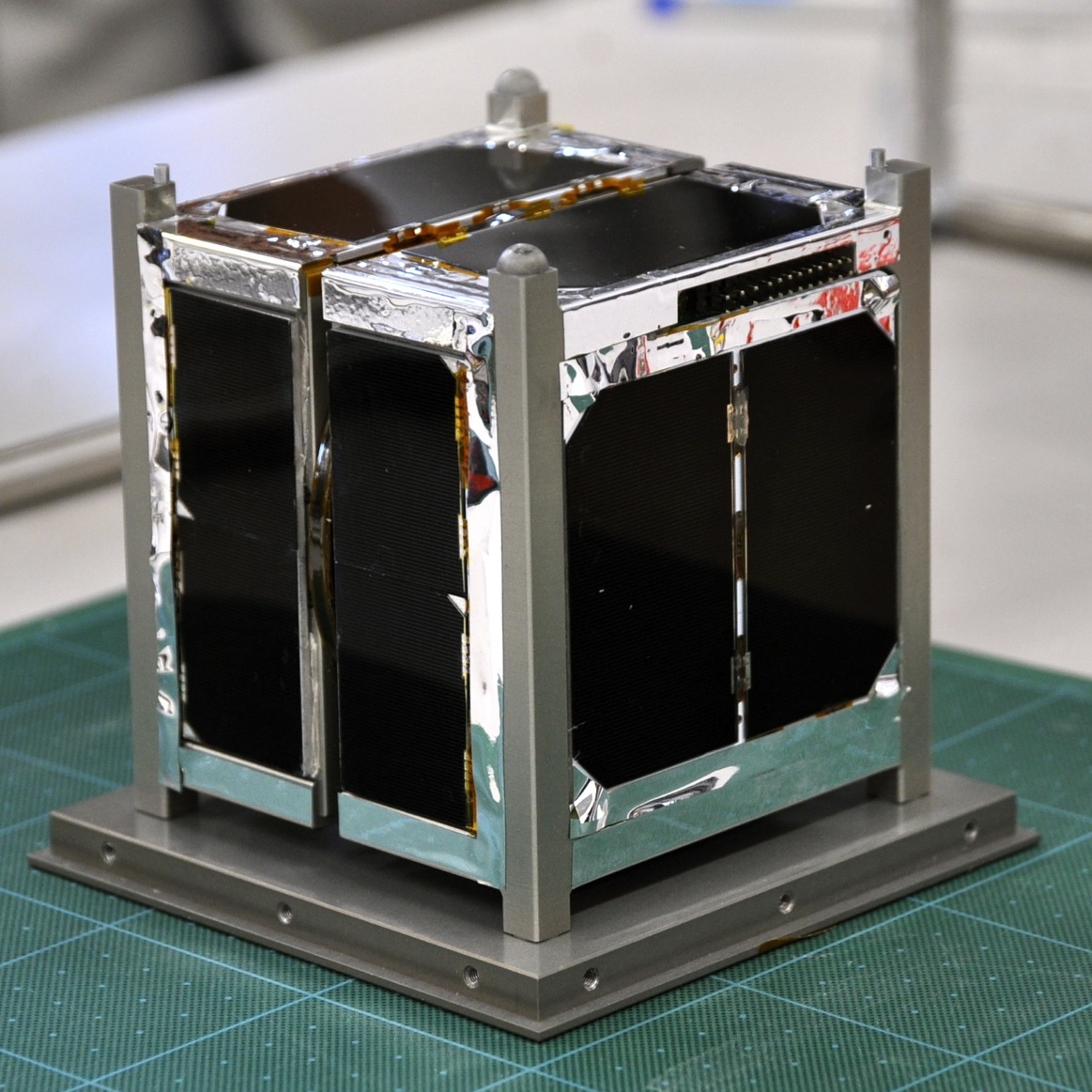ARTSAT:Art and Satellite Project
“ARTSAT: Art and Satellite Project”, which began in 2010, understands Earth-orbiting satellites and deep-space spacecrafts as ‘media that connect Earth with outer space’. The project launched a nano art satellite and an independently developed spacecraft to carry out experimental creative practices that utilize data transmitted from space including, interactive media art and sound/software art. The project, a collaboration between Tama Art University and The University of Tokyo, is run by members from varying fields.
On February 28, 2014 (JST), the world’s first art satellite, “ARTSAT1: INVADER” was launched as a piggyback payload of the H-IIA F23 launch vehicle, and inserted into a non-sun-synchronous orbit at an altitude of 378 km and inclination of 65 degrees. INVADER, a 10 cm cube 1U-CubeSat with a mass of 1.85 kg continued its steady operation on orbit, successfully performing an array of artistic missions by commands from the main ground station at Tama Art University. These missions included algorithmic generation and transmission of synthesized voice, music, and poems; capturing and transmitting of image data; and communicating with the ground through a chatbot program. INVADER was also equipped with “MORIKAWA”, a mission on-board computer (OBC) compatible with open-source hardware platform Arduino, programmed with various functions reflecting today’s maker/hacker culture such as on-orbit satellite operation and reprogramming via web browser.

INVADER extended its orbit for an additional two months and deorbited and reentered the Earth’s atmosphere for disintegration on September 2, 2014 9:47 AM (JST). During the INVADER’s operation, ARSAT Project took part in the “mission [SPACE×ART]−beyond Cosmologies” exhibition held at the Museum of Contemporary Art Tokyo from June 7 – August 31, 2014, realizing the world’s first media installation deploying data from an operating satellite.

Following INVADER, the ARSAT Project designed and developed its second probe, deep space sculpture “ARTSAT2:DESPATCH(**)”. DESPATCH––a 3D-printed, spiral-shaped (sculptural) form with an envelope area of approx. cube 50 cm and a total mass of approx. 33 kg––was successfully launched as a piggy-back payload of the H-IIA launch vehicle (main satellite: “Hayabusa II”) on December 3, 2014. DESPATCH is the world’s first artwork to be inserted into deep space orbit and marks the farthest distance from the Earth as an artwork. Its mission includes the transmission of ‘cosmic poems’. DESPATCH’s signal was successfully received from a distance of 4.7 million km (12 times the distance from the Moon), setting the new world distance record for a signal received by an amateur radio station. DESPATCH ended its operation on January 3, 2015, however it will continue to semi-permanently orbit the sun as a gift to the future of mankind.

(*) INteractive Vehicle for Art and Design Experimental Research
(**) DEep SPace Amateur Troubadour’s CHallange
ARTSAT is an open project that anyone can join. Progress reports will be published frequently on the web pages below. We are looking forward to receiving comments and other helpful feedback from everyone who came to see the exhibition.
[ARTSAT Project]
https://artsat.jp/en
[Facebook]
https://www.facebook.com/artsat
March 2014 Tama Art University + The University of Tokyo “ARTSAT: Art and Satellite Project”











